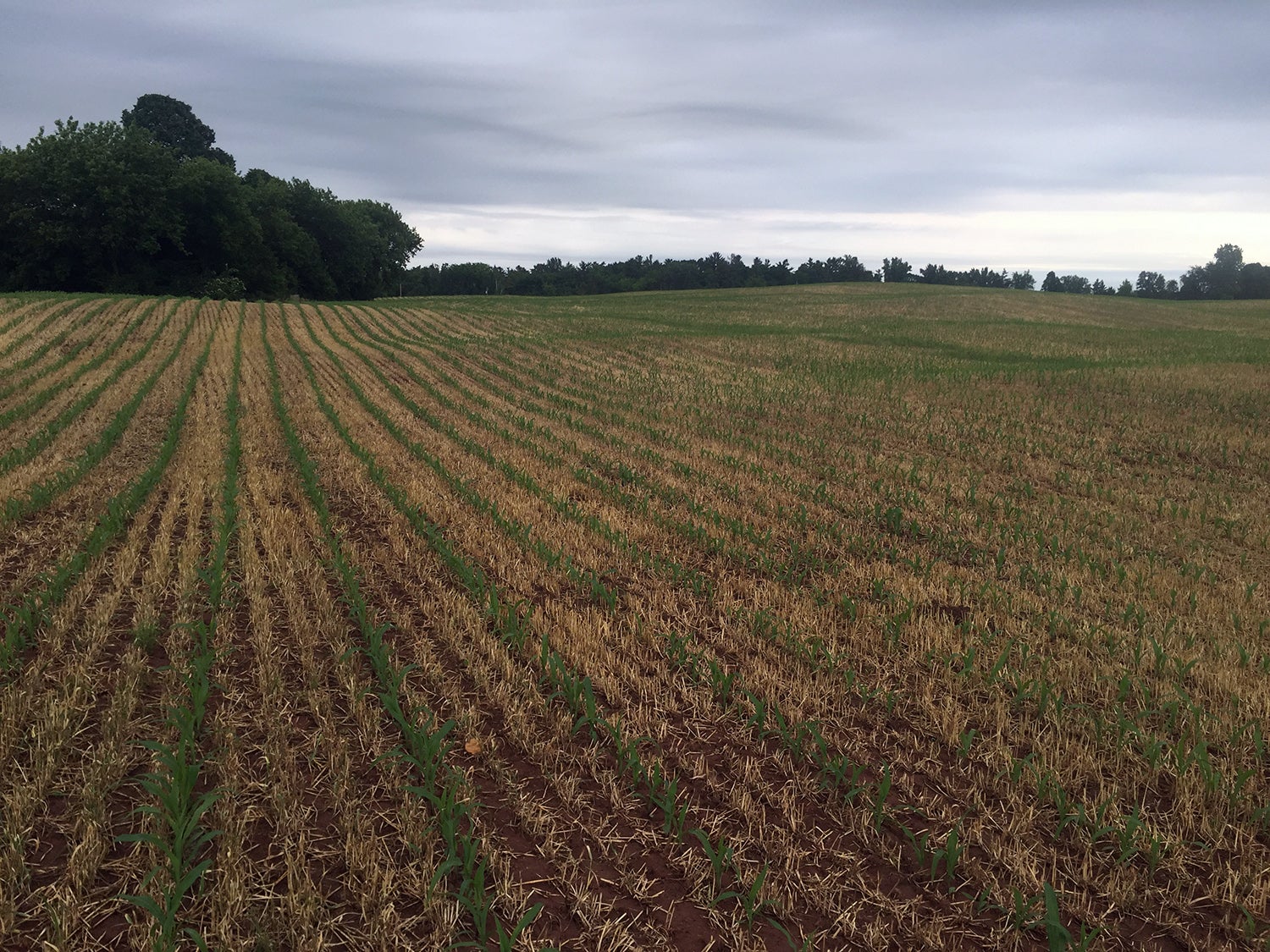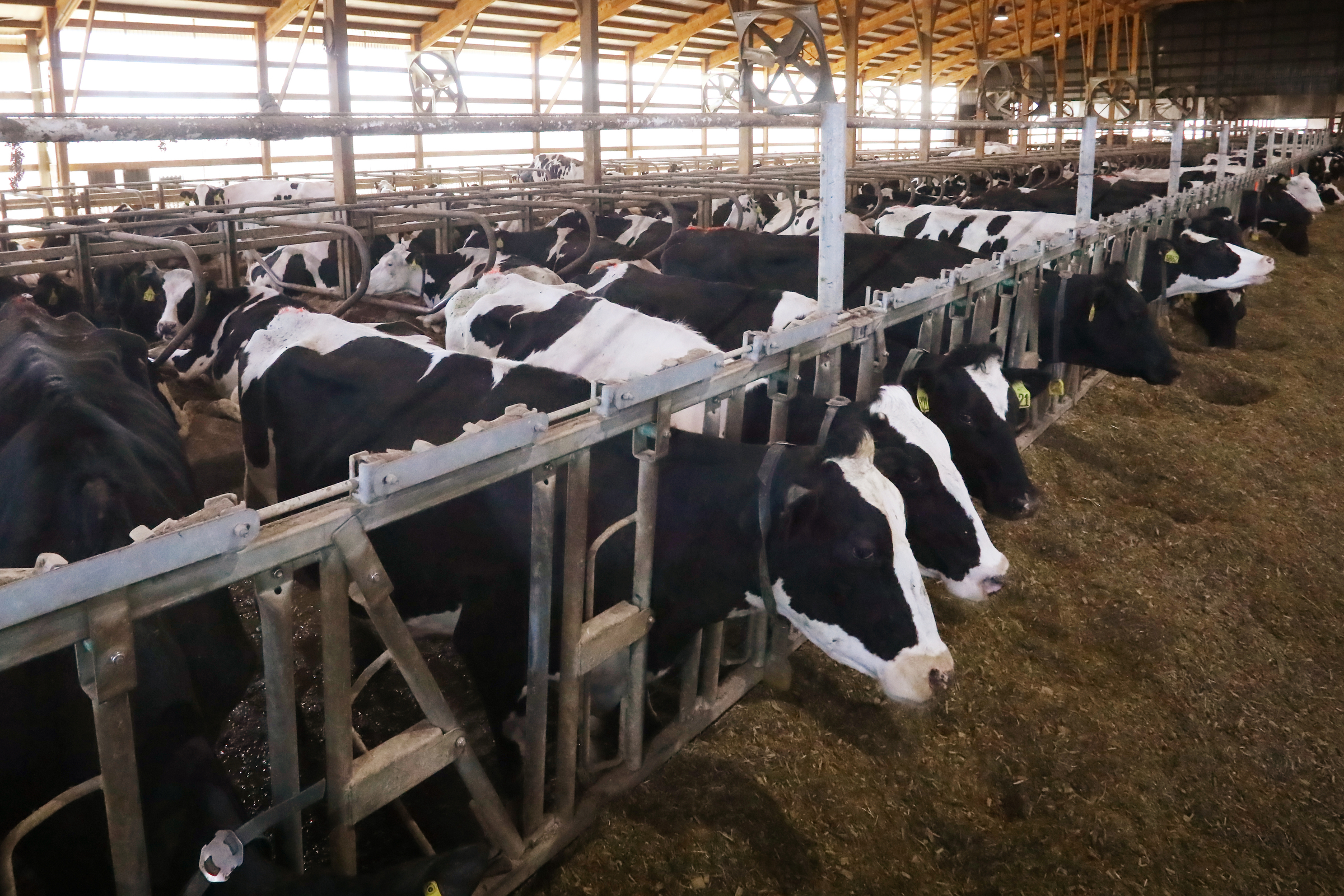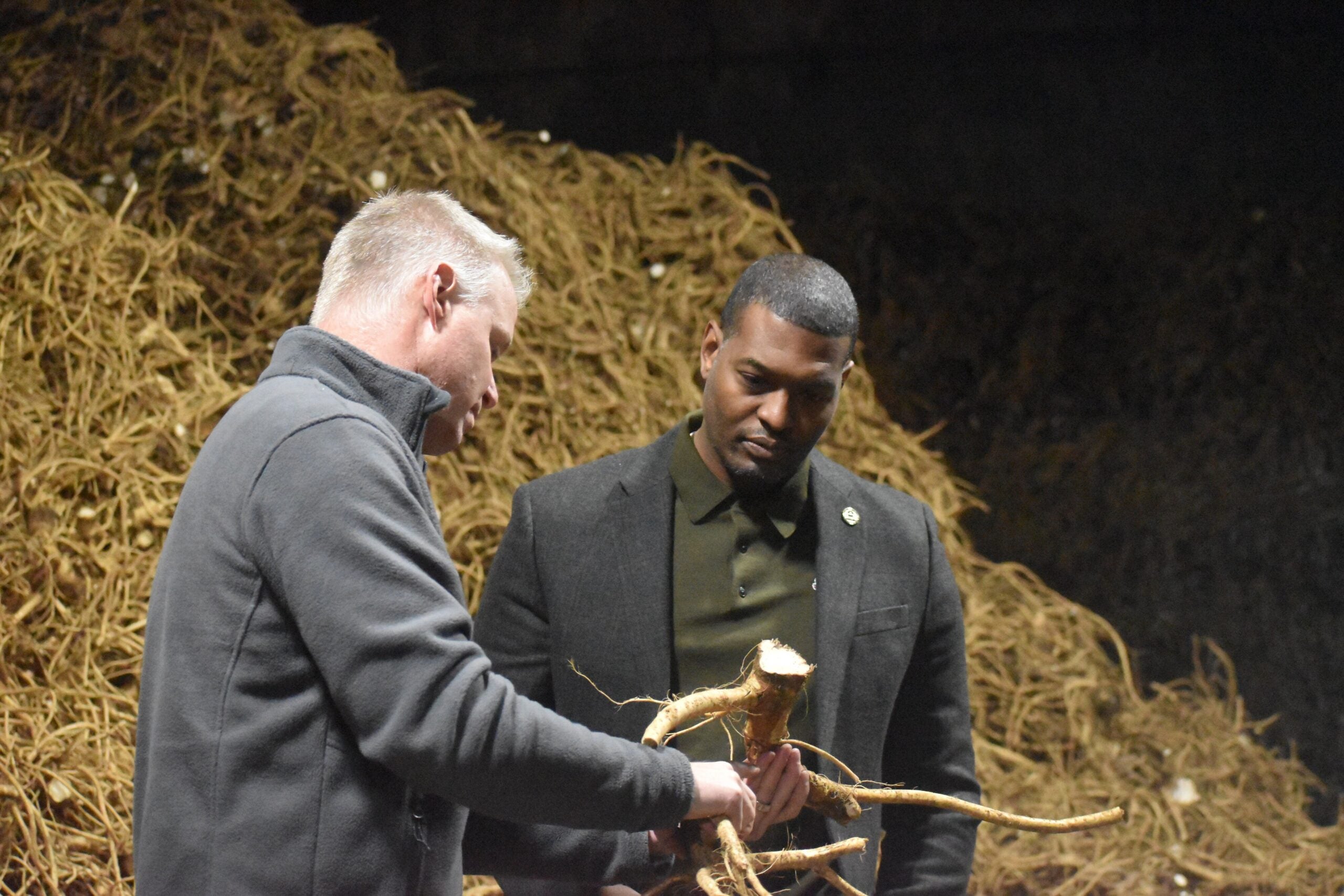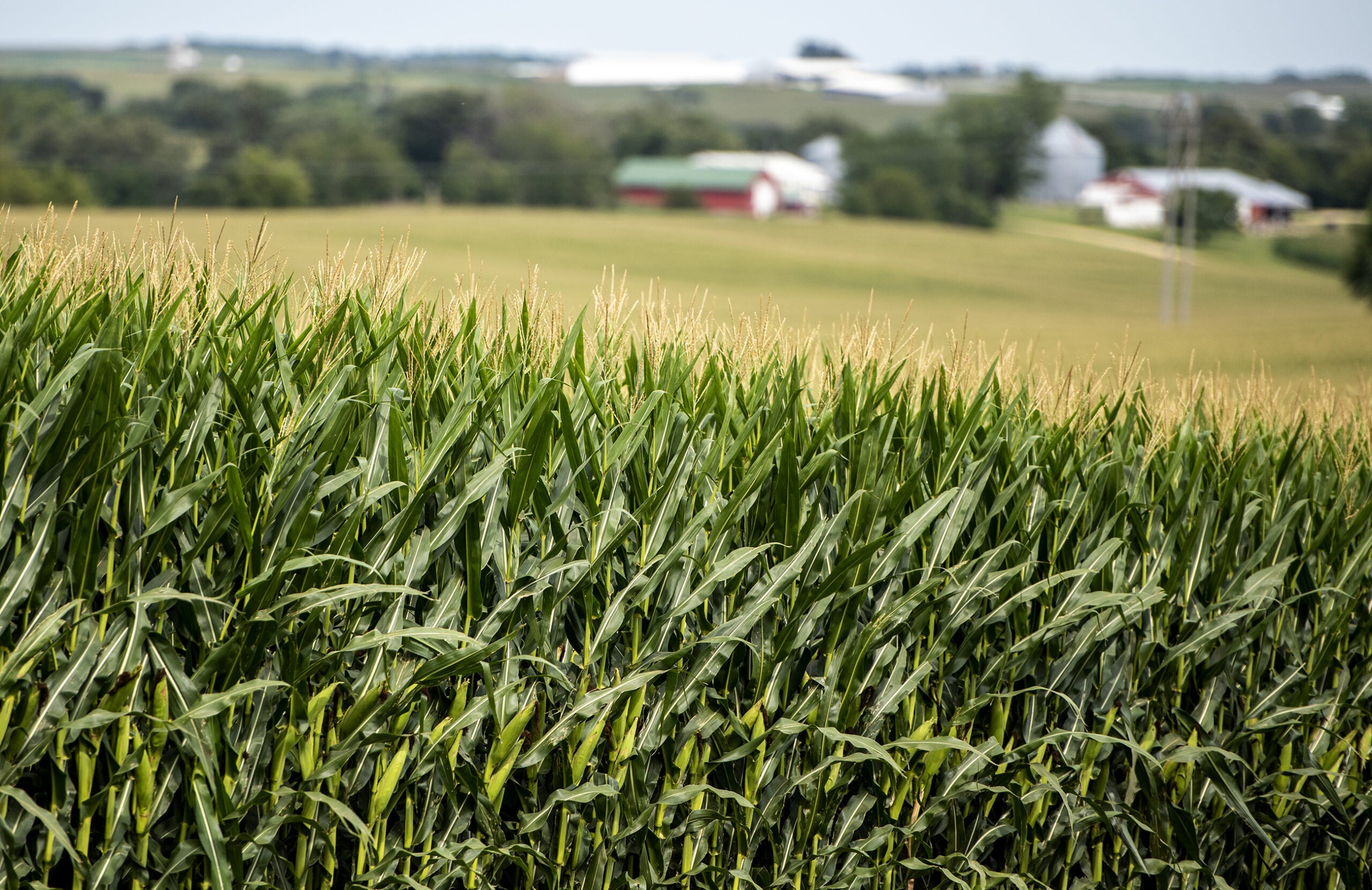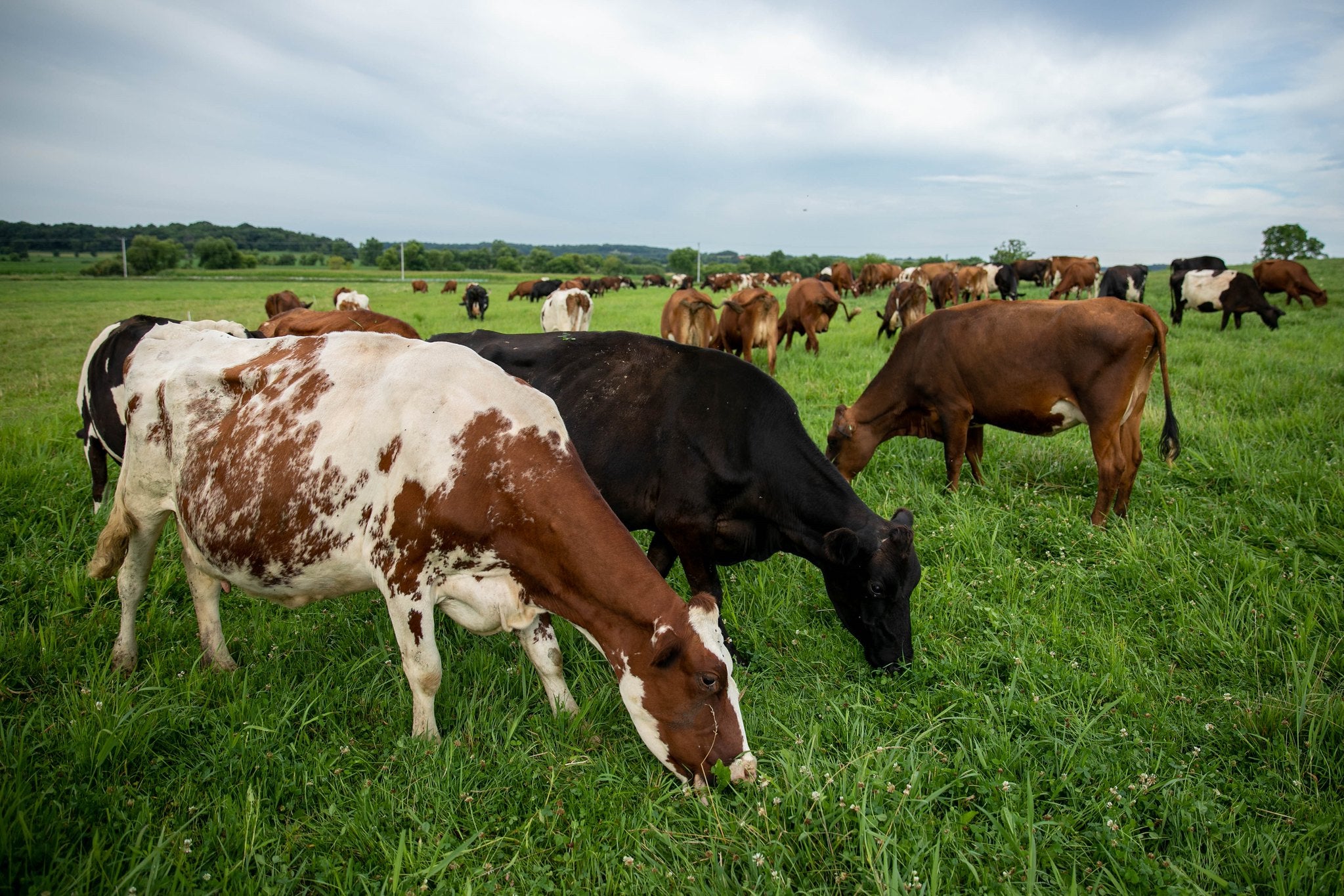The melting of snow across much of Wisconsin means it’s time for farmers to get ready for spring planting, which for many means increasing manure spreading on their fields. But it’s also a risky time because some of that animal waste can run off the soil and into groundwater, streams and lakes.
In some parts of Wisconsin, growers have enrolled in government-organized demonstration projects that use newer runoff reduction methods to try to keep more soil and manure on the land.
One project continuing this spring is in rural Brown County, near Greenleaf. Dan Brick, owner of Brickstead Dairy, is one of seven participants in the Lower Fox Demonstration Farms Network.
Stay informed on the latest news
Sign up for WPR’s email newsletter.
On his property recently, Brick reached to the ground in a moist field to point out small plants: barley, winter wheat and winter triticale.
Those species and about 10 others were planted last fall as what’s known as cover crops. Manure was injected into the soil, instead of being sprayed or spread more widely. The idea is that maintaining vegetation on the land will reduce winter and springtime erosion.
Dan Brick’s operation in rural Brown County is part of the Lower Fox Demonstration Farms Network. Courtesy of the USDA’s Natural Resources Conservation Service
Being more careful with manure application will keep more nutrients like phosphorus on the field and out of nearby surface water where the chemical can spur unwanted plant growth, like algae.
Brick said when he looks at these acres now, he becomes excited.
“Five years ago, I would have thought we’ve got to work this field to be able to get it able to grow crops. Now, I’m realizing we don’t have to,” he said. “We can just go ahead and plant into it.”
Brick said the residue of the cover crops won’t get in the way of planting corn.
The Lower Fox Demonstration Farms Network is organized by the U.S. Department of Agriculture’s Natural Resources Conservation Service. Coordinator Barry Bubolz said the number of acres enrolled in the 5-year-old project keeps growing. But he acknowledged some farmers want to keep with their tradition of planting on bare ground, or don’t have the money or time to try newer techniques.
“We still have a lot of work. We have more farmers to try and assist ” Bubolz said. “But I’m confident that we’re going to be able to continue to spread the concept of soil health and get more of this land covered during critical time periods of the year.”
Other experts say much of northern Wisconsin is too cold to allow cover crops to take root before winter hits.
Even with growing efforts to control runoff, some people who live next to farms complain about contaminants getting into their drinking water wells, and otherwise spoiling their property.
Runoff flows into Ben Arnold’s yard in Mequon from a neighboring farm. Courtesy of Ben Arnold
In Mequon, longtime farm neighbor Ben Arnold looked across his back fence, and said that despite the farm field next door having a cover crop, runoff has polluted his backyard for years.
“It’s as black as black coffee sometimes with the runoff,” Arnold said. “Even with the vegetation cover on the ground, when the hay crop is cut off in the fall, there’s nothing holding the nutrients on that land. It’s a sloped property and runs right off.”
Arnold said manure, as well as the weed killer atrazine, have gotten into ponds he dug on his land, killing fish and frogs. Arnold also worries about birds, such as egrets and herons, that eat the pond wildlife. And he’s concerned about the water quality in the nearby Milwaukee River.
State officials say they’re well aware of ongoing problems with contaminated runoff.
The Wisconsin Department of Agriculture, Trade and Consumer Protection is nearing final passage of rules that would affect the nutrient management plans farmers have to develop before spreading manure and other fertilizer.
DATCP’s Sara Walling said additional restrictions would cover when, where and how much of the nutrients can be applied.
“All of which is really intended to help increase the protections for surface water and groundwater,” Walling said. “But we’re also making sure the crops are able to able to receive the nutrients — the nitrogen, phosphorus and potassium — they need to also be productive.”
Walling said some of the changes would eventually become mandatory for growers involved in a farmland preservation program, or if their home county has other requirements. But she said the state would increase its cost-sharing with farmers.
The Wisconsin Department of Natural Resources is also working on runoff restrictions for parts of the state; and some local governments, like Dane County, are trying to help farms store manure in the winter.
But a key part of the federal assistance effort may be in jeopardy. President Donald Trump wants to eliminate the Great Lakes Restoration Initiative, which has helped pay for the demonstration project in Brown County.
Farmer Dan Brick said that would be disappointing.
“We’ve come a long ways with this, and you know we’re almost to the finish line,” Brown said. Congress and the Trump administration are expected to decide the fate of that funding over the course of this spring and summer. Then Wisconsin farmers — and their neighbors — will have a better idea of who’s still in the fight against contaminated runoff.
This story is part of a yearlong reporting project at WPR called State of Change: Water, Food, and the Future of Wisconsin. Find stories on Morning Edition, All Things Considered, The Ideas Network and online.
Wisconsin Public Radio, © Copyright 2024, Board of Regents of the University of Wisconsin System and Wisconsin Educational Communications Board.

